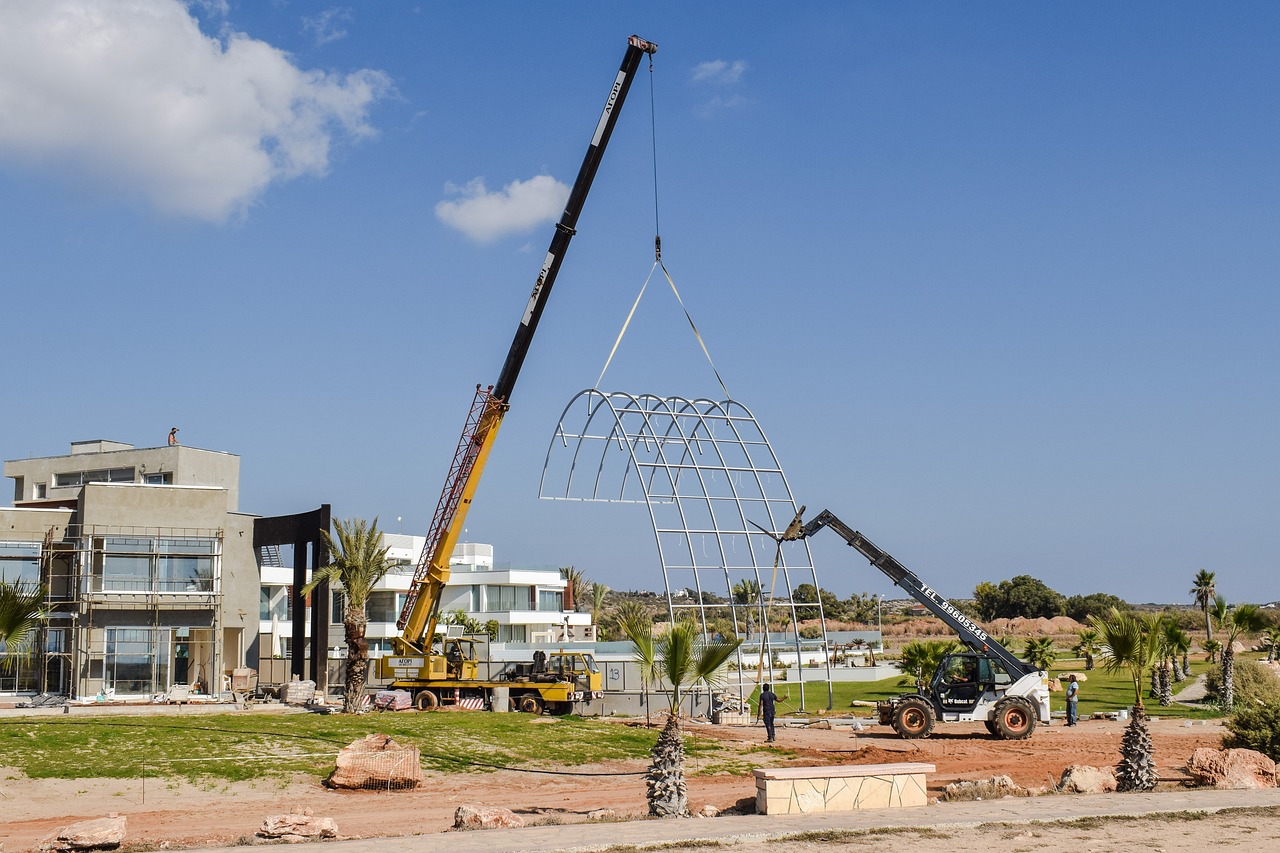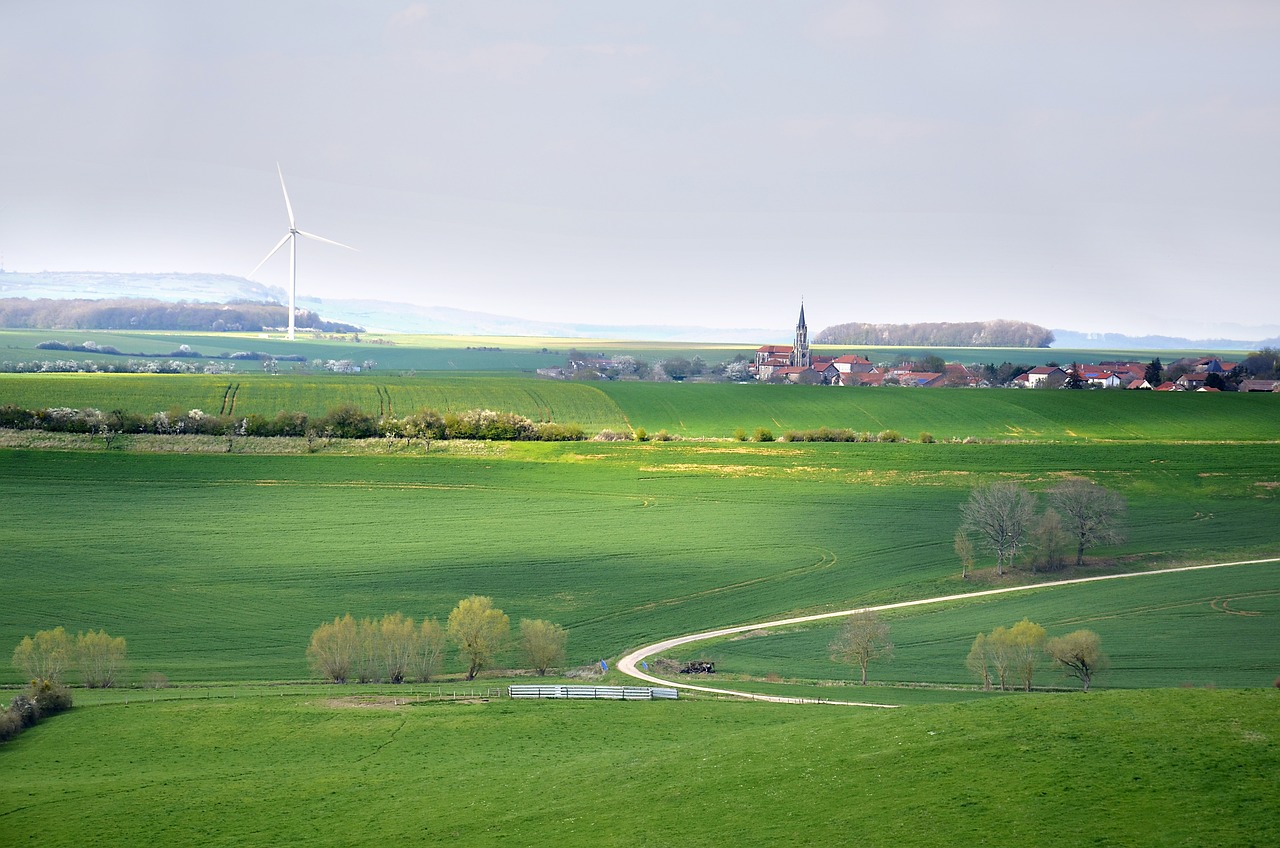Theories on the Evolution of Consciousness
Consciousness, that elusive quality that defines our human experience, has been a subject of fascination for centuries. From the moment we wake up to the time we drift into sleep, our consciousness shapes how we perceive the world around us. But have you ever wondered how this remarkable trait evolved? This article explores various theories regarding the evolution of consciousness, examining how it has developed over time and its implications for understanding human experience and cognition. By diving into biological, cognitive, and philosophical perspectives, we can unravel the complexities surrounding consciousness and appreciate its profound impact on our lives.
When we think about consciousness from a biological standpoint, it’s easy to see it as an evolutionary advantage. Imagine consciousness as a tool—one that has been honed over millions of years to help us survive and thrive. Biological theories focus on how adaptive traits have influenced the development of self-awareness and complex thought processes in humans and other species. For instance, the ability to reflect on past experiences and anticipate future outcomes can be seen as a significant evolutionary leap. This capacity for foresight not only aids in decision-making but also enhances social cooperation and communication, allowing groups to work together more effectively.
Moving beyond biology, cognitive development theories provide insight into how consciousness evolves through various stages of mental growth. Think of it as a journey through a landscape of learning, memory, and social interactions that shape our conscious experience over a lifetime. Each stage of cognitive development is characterized by unique challenges and milestones that contribute to our understanding of the world. For instance, as we learn and grow, our ability to think abstractly and critically expands, allowing for more complex forms of consciousness to emerge.
One of the most influential figures in cognitive development is Jean Piaget. His theory outlines distinct stages of cognitive growth, suggesting that consciousness evolves as children progress through these phases. Each stage marks a different way of thinking and understanding the world. For example, in the sensorimotor stage, infants develop consciousness through sensory experiences and motor actions. This stage lays the groundwork for later cognitive abilities and self-awareness as they interact with their environment.
During the sensorimotor stage, which lasts from birth to about two years old, infants engage with the world primarily through their senses and physical actions. They learn that their actions can produce effects—like shaking a rattle to hear a sound. This exploration fosters a nascent form of consciousness, as they begin to differentiate themselves from their surroundings. It’s a bit like a baby discovering a new playground; every swing, slide, and sandbox interaction is a new opportunity to learn and grow.
As children enter the concrete operational stage around the age of seven, they begin to think logically about concrete events. This stage enhances their understanding of the world and contributes significantly to the evolution of their conscious thought processes. They can grasp concepts such as conservation—understanding that quantity doesn’t change even when its shape does. This newfound ability to think logically is akin to upgrading from a bicycle to a car; suddenly, they can navigate more complex terrains of thought and understanding.
Another prominent figure in cognitive development is Lev Vygotsky, who emphasized the social aspects of learning. According to Vygotsky, consciousness evolves through social interactions and cultural tools that shape individual understanding and awareness. This perspective highlights the importance of collaboration, dialogue, and cultural context in shaping our conscious experience. Imagine consciousness as a tapestry woven from threads of social interactions, cultural norms, and shared knowledge; each thread contributes to the richness and depth of our awareness.
While biological and cognitive perspectives shed light on how consciousness develops, philosophical theories delve into the very nature of consciousness itself. These theories question its origins, functions, and the intricate relationship between mind and body. They offer diverse perspectives on how consciousness might have evolved, presenting a rich tapestry of thought that challenges our understanding.
The debate between dualism and physicalism is particularly significant. Dualism posits that consciousness is a separate entity from the physical brain, while physicalism suggests that consciousness emerges solely from neurological processes. This ongoing discussion influences not only our understanding of consciousness but also the implications it has for our sense of self and existence. It’s like trying to determine whether a painting is defined by its colors or the canvas it’s painted on—both perspectives offer valuable insights but lead to different conclusions.
Another intriguing theory is panpsychism, which posits that consciousness is a fundamental aspect of all matter. This perspective suggests that even simple entities possess some form of consciousness, thereby offering an alternative view on the evolution of conscious experience. If everything has a degree of consciousness, it reshapes our understanding of existence itself—imagine a universe where every rock and tree has its own unique awareness, contributing to a collective consciousness that binds us all.
- What is consciousness? Consciousness refers to the state of being aware of and able to think about one's own existence, thoughts, and surroundings.
- How does consciousness evolve? Consciousness evolves through biological, cognitive, and social processes, influenced by both genetic and environmental factors.
- What role does social interaction play in consciousness? Social interactions are crucial for cognitive development, shaping individual understanding and awareness, as proposed by Vygotsky.
- Is consciousness separate from the brain? This is a debated topic; dualism argues for a separation, while physicalism views consciousness as a product of brain activity.

Biological Perspectives
When we dive into the on the evolution of consciousness, it’s like peering through a fascinating lens that reveals how natural selection has shaped our minds. Imagine consciousness as a complex tapestry woven from the threads of survival and adaptation. This perspective suggests that consciousness isn't just a byproduct of brain activity; rather, it has evolved because it offers significant adaptive advantages to organisms. For instance, being conscious allows an organism to make better decisions, recognize threats, and navigate its environment more effectively.
In the grand scheme of evolution, consciousness may have emerged as a crucial trait that enhances an organism's ability to survive and reproduce. Consider how awareness of one’s surroundings can lead to improved foraging strategies, enabling creatures to find food more efficiently. This heightened state of awareness can also foster better social interactions, which are essential for species that rely on group living. The ability to communicate, cooperate, and even empathize can significantly increase the chances of survival for individuals within a community.
Moreover, the development of self-awareness—a key component of consciousness—has profound implications for social species. For example, species that exhibit self-awareness, such as certain primates and dolphins, often display complex social behaviors. These behaviors include cooperation, deception, and even the formation of alliances. Such traits can be incredibly beneficial in a competitive environment, where understanding the intentions and emotions of others can lead to better outcomes.
To illustrate the biological advantages of consciousness, let’s consider a few key traits that have evolved alongside it:
- Enhanced Problem-Solving: Consciousness allows for advanced reasoning and problem-solving capabilities, enabling organisms to adapt to new challenges.
- Social Intelligence: A conscious mind can navigate complex social hierarchies, improving cooperation and resource sharing.
- Emotional Awareness: Recognizing and understanding emotions can lead to stronger social bonds and better group cohesion.
In summary, the biological perspective on consciousness emphasizes its role as a vital evolutionary trait shaped by the pressures of survival and social interaction. It’s a captivating notion that our very awareness and ability to think critically have roots deeply embedded in the evolutionary history of our species. As we continue to explore this fascinating topic, it becomes clear that understanding consciousness through a biological lens not only enhances our grasp of human cognition but also sheds light on the intricate web of life itself.

Cognitive Development
Cognitive development is a fascinating journey that traces how our consciousness evolves as we grow. Have you ever wondered how a child transforms from a babbling infant into a thoughtful adult capable of abstract reasoning? This transformation is not just a magical leap; it's a carefully structured progression through various stages of mental growth. Theories of cognitive development emphasize the importance of learning, memory, and social interactions, all of which play a critical role in shaping our conscious experiences throughout life.
At the heart of cognitive development is the idea that consciousness is not static; rather, it evolves in response to our interactions with the world around us. Imagine a child who first learns to recognize their mother’s face. This moment is a significant milestone, as it marks the beginning of self-awareness and the understanding of relationships. As children engage with their environment, they accumulate experiences that contribute to their evolving consciousness. This process is akin to building a complex puzzle—every piece represents a new experience or interaction that helps complete the picture of who they are.
One of the most influential figures in cognitive development is Jean Piaget, who proposed that children progress through distinct stages, each characterized by unique ways of thinking and understanding the world. His theory suggests that as children grow, their cognitive abilities expand, leading to a richer and more complex conscious experience. For instance, during the early stages, children may think in very concrete terms, but as they mature, they learn to think abstractly, which significantly enhances their conscious awareness.
Moreover, Lev Vygotsky introduced a different perspective by emphasizing the social aspects of cognitive development. He argued that our consciousness evolves through social interactions and the cultural tools we acquire. Consider how children learn to speak; they do so not in isolation but through conversations with family and peers. This social constructivism highlights that consciousness isn't just an individual endeavor; it's a communal experience shaped by our interactions with others. In this sense, consciousness can be viewed as a tapestry woven from the threads of our social experiences, cultural background, and personal interactions.
In summary, cognitive development is a multifaceted process that illustrates how our consciousness evolves through various stages influenced by learning, memory, and social interactions. As we navigate through life, we continuously build on our experiences, leading to an enriched understanding of ourselves and the world around us. This ongoing journey of development not only enhances our cognitive abilities but also deepens our conscious awareness, making us who we are today.
- What is cognitive development?
Cognitive development refers to the progression of thought processes, including perception, memory, and reasoning, as a person matures. - Who proposed the stages of cognitive development?
Jean Piaget is the psychologist known for outlining the stages of cognitive development in children. - How does social interaction influence cognitive development?
Social interaction provides essential experiences and cultural tools that shape an individual's understanding and consciousness. - Can cognitive development occur in adulthood?
Yes, cognitive development continues throughout life, influenced by new experiences and learning opportunities.

Piaget's Stages
Jean Piaget, a pioneering Swiss psychologist, revolutionized our understanding of cognitive development through his insightful theory that outlines four distinct stages. Each stage marks a significant leap in a child's ability to think and process information, and it’s fascinating to see how these stages correlate with the evolution of consciousness. As children traverse these phases, they not only gain knowledge but also develop a deeper sense of self-awareness and understanding of their surroundings.
The stages are as follows:
| Stage | Age Range | Key Characteristics |
|---|---|---|
| Sensorimotor | 0-2 years | Learning through sensory experiences and motor actions. |
| Preoperational | 2-7 years | Development of language and symbolic thinking; egocentric perspective. |
| Concrete Operational | 7-11 years | Logical thinking about concrete events; understanding of conservation. |
| Formal Operational | 12 years and up | Abstract reasoning and problem-solving; hypothetical thinking. |
In the sensorimotor stage, infants are like little explorers, learning about the world through their senses and movements. They engage with their environment in a hands-on way, which is crucial for developing the foundational aspects of consciousness. For instance, when a baby shakes a rattle, they are not just making noise; they are discovering cause and effect, which is a fundamental building block for later cognitive abilities.
As they transition into the preoperational stage, children begin to use language and engage in symbolic play. However, their thinking is still quite egocentric; they struggle to see things from perspectives other than their own. This stage is like a colorful canvas where imagination runs wild, but the brush strokes are still a bit clumsy. They might believe that their stuffed animals have feelings just like they do, showcasing an early form of consciousness that is still developing.
Moving on to the concrete operational stage, children start to think logically about concrete events. They can grasp the concept of conservation, understanding that quantity doesn’t change even when its shape does. Imagine a child pouring water from a tall, narrow glass into a short, wide one—they can now understand that the amount of water remains the same. This newfound logic enhances their conscious thought processes, allowing them to engage more meaningfully with the world around them.
Finally, in the formal operational stage, individuals develop the ability to think abstractly and critically. They can ponder hypothetical situations and engage in systematic problem-solving. This stage is akin to stepping onto a stage where the play of life becomes more complex and nuanced. The evolution of consciousness here is profound, as adolescents begin to form their own identities and philosophies, questioning not just the world around them but also their place within it.
In summary, Piaget's stages of cognitive development provide a framework for understanding how consciousness evolves from infancy through adolescence. Each stage builds on the previous one, showcasing a remarkable journey from simple sensory experiences to complex abstract reasoning. This progression not only highlights the intricacies of human thought but also emphasizes the importance of nurturing cognitive growth during these formative years.
- What is Piaget's theory of cognitive development? Piaget's theory posits that children progress through four stages of cognitive development, each characterized by different ways of thinking and understanding the world.
- How do the stages of Piaget's theory relate to consciousness? Each stage represents a shift in consciousness, as children develop increasingly complex thought processes and self-awareness.
- Can children skip stages in Piaget's theory? While Piaget suggested that stages are sequential, individual differences in development may lead to variations in how children experience these stages.

Sensorimotor Stage
The , which spans from birth to about two years of age, is a fascinating period in cognitive development. During this time, infants are like little explorers, engaging with the world primarily through their senses and motor actions. Imagine a baby reaching out to grasp a colorful toy; this simple act is more than just play; it’s a crucial building block in the development of consciousness and self-awareness. As they interact with their environment, they learn about the world around them, laying the groundwork for more complex thought processes later on.
At this stage, infants begin to understand the concept of object permanence, which is the realization that objects continue to exist even when they are not visible. This is a significant leap in cognitive development because it indicates that the child is starting to form a mental representation of the world. For instance, when a parent hides a toy under a blanket, the infant will eventually learn to look for it, demonstrating a basic form of mental awareness and the beginnings of conscious thought.
Furthermore, the sensorimotor stage is divided into six sub-stages, each marked by distinct milestones that contribute to the evolution of consciousness:
- Reflexive Schemes (0-1 month): Newborns exhibit reflexive behaviors such as sucking and grasping.
- Primary Circular Reactions (1-4 months): Infants begin to repeat pleasurable actions centered on their own body.
- Secondary Circular Reactions (4-8 months): Babies start to engage with the world around them, repeating actions that produce interesting effects.
- Coordination of Secondary Circular Reactions (8-12 months): Infants develop goal-directed behavior, combining multiple actions to achieve a desired outcome.
- Tertiary Circular Reactions (12-18 months): Children experiment with new actions to see the effects, demonstrating curiosity and problem-solving skills.
- Mental Representation (18-24 months): This final sub-stage marks the beginning of symbolic thought, as children can now think about objects and events that are not immediately present.
Each of these sub-stages plays a critical role in shaping an infant’s understanding of their environment and themselves. The experiences gained during the sensorimotor stage are foundational, influencing future cognitive development and the emergence of more complex forms of consciousness. As infants learn to navigate their surroundings, they are not just developing motor skills; they are also building a framework for understanding their place in the world, which is a vital aspect of what it means to be conscious.
In summary, the sensorimotor stage is a remarkable journey of discovery. It’s during this time that infants learn to make sense of their world through exploration and interaction. Each sensory experience and motor action contributes to the intricate tapestry of consciousness, setting the stage for more advanced cognitive processes in the years to come. As we reflect on this stage, it becomes clear that the evolution of consciousness is not just a biological phenomenon but a rich, dynamic interplay between the individual and their environment.
- What is the sensorimotor stage? The sensorimotor stage is the first stage of cognitive development, occurring from birth to approximately two years of age, where infants learn about the world through their senses and motor actions.
- What are the key milestones in the sensorimotor stage? Key milestones include the development of object permanence, reflexive behaviors, and the ability to engage in goal-directed actions.
- Why is the sensorimotor stage important? This stage lays the foundation for future cognitive development and the evolution of consciousness, as infants learn to understand their environment and themselves.

Concrete Operational Stage
The , as defined by Jean Piaget, typically spans from ages 7 to 11 years. During this phase, children begin to move beyond the limitations of the earlier preoperational stage, where thinking is often intuitive and egocentric. Instead, they start to embrace a more logical and organized way of processing information. It’s as if they’ve been handed a pair of glasses that allows them to see the world with clearer vision, understanding relationships and the properties of objects in a more structured manner.
At this stage, children gain a better grasp of the concept of conservation. This means they understand that quantity doesn’t change even when its shape does. For example, if you pour water from a tall, narrow glass into a short, wide one, they can comprehend that the amount of water remains the same despite its different appearance. This realization is a significant leap in their cognitive development, marking a transition from mere perception to logical reasoning.
Moreover, children in the Concrete Operational Stage become adept at classification and seriation. They can categorize objects based on shared characteristics and arrange them in a logical sequence. For instance, they might sort a collection of toy animals into groups based on their species or size. This newfound ability to organize and categorize not only enhances their understanding of the world but also plays a crucial role in their conscious experience as they learn to navigate social interactions and comprehend complex ideas.
Interestingly, the cognitive shifts that occur during this stage can be illustrated through a simple table that outlines key characteristics of the Concrete Operational Stage compared to the previous preoperational stage:
| Characteristic | Preoperational Stage | Concrete Operational Stage |
|---|---|---|
| Logical Thinking | Egocentric and intuitive | Logical and organized |
| Understanding of Conservation | Limited understanding | Clear understanding |
| Classification Skills | Basic categorization | Advanced categorization |
| Seriation Skills | Limited | Developed |
In addition to these cognitive advancements, the Concrete Operational Stage is also marked by an increase in social awareness. Children begin to understand the perspectives of others, which is a crucial aspect of developing empathy and social skills. They start to realize that their thoughts and feelings are not the only ones that matter, paving the way for more profound interpersonal relationships. This evolution of consciousness during this stage is not merely academic; it has real-world implications as children learn to collaborate, negotiate, and resolve conflicts with their peers.
In summary, the Concrete Operational Stage represents a pivotal moment in the evolution of consciousness. Children transition from a world dominated by personal perceptions to one where logic, organization, and social understanding take precedence. This stage lays the groundwork for more complex thought processes and prepares children for the challenges of adolescence and adulthood. Just as a tree grows stronger with each passing season, so too does a child's consciousness deepen and expand through these critical developmental stages.
- What is the Concrete Operational Stage? It is a phase in Piaget's theory of cognitive development where children aged 7 to 11 develop logical thinking and a better understanding of the world.
- What are key characteristics of this stage? Key characteristics include the understanding of conservation, classification, and seriation skills, along with improved social awareness.
- How does this stage impact a child's development? This stage enhances logical reasoning, social skills, and lays the foundation for more complex cognitive processes in later stages.

Vygotsky's Social Constructivism
Lev Vygotsky's theory of social constructivism offers a fascinating lens through which we can understand the evolution of consciousness. Unlike traditional views that focus solely on individual cognitive development, Vygotsky emphasized the critical role of social interactions and cultural contexts in shaping our conscious experience. He proposed that our understanding of the world is not developed in isolation but rather through engaging with others. This interaction is fundamental to how we construct knowledge and develop self-awareness.
At the core of Vygotsky's theory is the concept of the Zone of Proximal Development (ZPD). This idea suggests that there is a space between what a learner can do independently and what they can achieve with guidance. This zone is where the most effective learning occurs, as individuals are pushed to expand their cognitive abilities through collaboration and dialogue. In this way, consciousness evolves not just through individual effort, but through the scaffolding provided by more knowledgeable others, such as parents, teachers, or peers.
Vygotsky argued that language plays a pivotal role in this process. As children learn to communicate, they also learn to think. Language is not merely a tool for communication; it shapes our thoughts and perceptions of reality. For instance, consider how the words we use can frame our understanding of complex emotions or ideas. This is why Vygotsky believed that cultural tools—like language, symbols, and artifacts—are essential for the development of consciousness. They provide the means through which we can articulate our thoughts and engage with the world around us.
In practice, Vygotsky's ideas have profound implications for education and child development. By recognizing the importance of social context, educators can create environments that foster collaborative learning. This approach encourages students to engage with one another, share perspectives, and develop a richer understanding of concepts. The evolution of consciousness, therefore, becomes a communal journey rather than a solitary path.
To illustrate Vygotsky's ideas further, we can consider the following key elements of his theory:
- Social Interaction: The foundation of cognitive development, emphasizing that learning occurs through dialogue and collaboration.
- Language as a Tool: Language is not just a means of communication; it is a critical component that shapes our thoughts and understanding.
- Zone of Proximal Development: The gap between what learners can do alone and what they can achieve with assistance, highlighting the importance of guided learning.
In conclusion, Vygotsky's social constructivism provides a rich framework for understanding how consciousness evolves through social and cultural contexts. It challenges the notion of individualism in cognitive development, emphasizing that our conscious experience is deeply intertwined with our interactions with others. By appreciating this interconnectedness, we can better understand the complexities of human cognition and the ongoing evolution of consciousness.
What is Vygotsky's main contribution to the understanding of consciousness?
Vygotsky's main contribution is highlighting the role of social interactions and cultural tools in the development of consciousness, suggesting that our understanding is shaped through collaboration with others.
How does the Zone of Proximal Development relate to learning?
The Zone of Proximal Development (ZPD) refers to the difference between what a learner can do independently and what they can achieve with guidance, emphasizing the importance of social support in learning.
Why is language important in Vygotsky's theory?
Language is crucial because it not only facilitates communication but also shapes our thoughts and perceptions, playing a key role in cognitive development.
How can educators apply Vygotsky's ideas in the classroom?
Educators can create collaborative learning environments that encourage dialogue and interaction among students, utilizing social context to enhance understanding and cognitive development.

Philosophical Approaches
Philosophical theories delve into the nature of consciousness, raising profound questions about its origins, functions, and the intricate relationship between mind and body. These inquiries not only challenge our understanding of consciousness but also invite us to explore the various perspectives that have emerged over centuries. One of the most captivating aspects of these philosophical debates is how they inform our understanding of human experience and cognition. For instance, consider the age-old question: Is consciousness something that arises purely from the physical processes of the brain, or is it a distinct entity that exists independently? This question leads us to explore two prominent philosophical stances: dualism and physicalism.
Dualism, famously advocated by philosophers like René Descartes, posits that the mind and body are fundamentally different substances. According to this view, consciousness is not merely a byproduct of physical processes but exists in a realm separate from the tangible world. This perspective raises intriguing implications about the nature of reality and our understanding of self-awareness. On the other hand, physicalism argues that consciousness emerges solely from neurological processes within the brain. This view suggests that everything we experience, including thoughts and emotions, can be traced back to the intricate workings of our neural networks. The ongoing debate between these two perspectives continues to shape contemporary discussions in both philosophy and neuroscience.
Another fascinating perspective is panpsychism, which posits that consciousness is a fundamental aspect of all matter. This theory challenges our conventional understanding by suggesting that even the simplest entities possess some form of consciousness. Imagine a world where every atom has a tiny flicker of awareness; this idea radically shifts our perception of consciousness and its evolution. By proposing that consciousness is not exclusive to complex organisms, panpsychism opens up new avenues for understanding how consciousness might have developed over time. It invites us to consider the possibility that consciousness is woven into the very fabric of the universe, influencing the evolution of all living beings.
To summarize the philosophical approaches to consciousness, we can look at the following table:
| Philosophical Approach | Description |
|---|---|
| Dualism | Posits that mind and body are separate entities, with consciousness existing independently of physical processes. |
| Physicalism | Argues that consciousness arises solely from neurological processes within the brain. |
| Panpsychism | Suggests that consciousness is a fundamental aspect of all matter, implying that even simple entities possess some form of consciousness. |
These philosophical frameworks not only enrich our understanding of consciousness but also highlight the complexities involved in studying this enigmatic phenomenon. As we continue to explore these theories, we find ourselves questioning not just the nature of consciousness but also what it means to be human. How do our beliefs about consciousness shape our experiences and interactions with the world? This introspective journey is essential for grasping the full scope of consciousness and its evolution.
- What is dualism? Dualism is the philosophical position that the mind and body are distinct and separate entities, suggesting that consciousness exists independently of physical processes.
- How does physicalism explain consciousness? Physicalism asserts that consciousness is a product of neurological processes in the brain, meaning all mental experiences can be traced back to physical interactions.
- What is panpsychism? Panpsychism is the view that consciousness is a fundamental quality of all matter, implying that even the simplest forms of matter possess some level of consciousness.
- Why is the study of consciousness important? Understanding consciousness is crucial as it influences our perception of reality, our interactions with others, and our overall human experience.

Dualism vs. Physicalism
The debate between dualism and physicalism is one of the most fascinating discussions in the realm of consciousness studies. At its core, this debate revolves around the fundamental question: Is consciousness a separate entity from the physical brain, or is it merely a product of neurological processes? Dualism, famously championed by philosophers like René Descartes, posits that the mind and body are distinct substances. In this view, consciousness exists independently of the physical realm, suggesting that our thoughts, emotions, and experiences are not entirely reducible to brain activity. This perspective raises intriguing questions about the nature of self-awareness and personal identity, leading many to ponder whether there’s more to our existence than just biological functions.
On the other hand, physicalism argues that everything about consciousness can be explained through physical processes. This viewpoint asserts that all mental states, including thoughts and feelings, arise from brain activity. Essentially, physicalists believe that consciousness is an emergent property of complex neurological interactions. This perspective has gained traction in the scientific community, especially with advancements in neuroscience that continue to unveil the intricate workings of the brain. As researchers delve deeper into the brain's mechanisms, they find compelling evidence that supports the idea that consciousness is tightly linked to physical states.
The implications of these two perspectives are profound. If dualism is correct, it opens the door to questions about the afterlife, the nature of the soul, and the possibility of non-physical entities influencing our lives. Conversely, if physicalism holds true, it suggests that our conscious experiences are entirely bound to our biological existence, potentially reducing the mystery of consciousness to a series of chemical reactions and electrical impulses. This dichotomy invites us to explore several key questions:
- What are the implications of each theory for our understanding of free will?
- How do these perspectives influence our perception of mental health and treatment?
- Can consciousness be replicated or transferred, and what would that mean for identity?
As we navigate through these compelling theories, we find ourselves at a crossroads. The dualism vs. physicalism debate not only shapes our understanding of consciousness but also influences various fields, including psychology, cognitive science, and even artificial intelligence. The ongoing exploration of these ideas encourages us to rethink what it means to be conscious and how we relate to the world around us.
Q1: What is dualism?
A1: Dualism is the philosophical view that the mind and body are distinct entities, suggesting that consciousness exists separately from physical processes.
Q2: What is physicalism?
A2: Physicalism is the belief that everything about consciousness can be explained through physical processes, asserting that mental states arise from brain activity.
Q3: How do dualism and physicalism impact our understanding of free will?
A3: Dualism may suggest that free will exists independently of physical laws, while physicalism often implies that our choices are determined by neurological processes.
Q4: Can consciousness be replicated or transferred according to these theories?
A4: Physicalism raises questions about the possibility of replicating consciousness in machines, while dualism complicates the idea by introducing the concept of a non-physical mind.

Panpsychism
Panpsychism is a fascinating and somewhat radical theory that suggests consciousness is not just a feature of complex beings like humans, but rather a fundamental quality of all matter. Imagine for a moment that everything around us—rocks, trees, even the air we breathe—possesses some form of consciousness. It’s a perspective that challenges our traditional understanding of what it means to be aware. This theory posits that consciousness exists on a spectrum, and even the simplest particles may have a rudimentary form of awareness.
At its core, panpsychism argues that consciousness is ubiquitous. This means that rather than being an exclusive trait of advanced organisms, it is a basic property of the universe. Think of it like a hidden layer of reality that permeates everything. Just as water can exist in various states—solid, liquid, gas—consciousness too can manifest in different forms depending on the complexity of the system. For instance, while a human might experience rich and nuanced thoughts, a stone might possess a very basic form of awareness, perhaps just an instinctual response to its environment.
One of the most intriguing aspects of panpsychism is its implications for our understanding of consciousness evolution. If consciousness is indeed present in all matter, then it prompts us to reconsider how consciousness has developed over time. Instead of a linear progression from simple to complex beings, we might envision a more intricate web of consciousness that has always existed, evolving in complexity as different forms of life emerged. This perspective invites us to explore the interconnectedness of all things, suggesting that our own consciousness is part of a larger, universal tapestry.
Critics of panpsychism often raise questions about how such a theory can be tested or observed. After all, if even the simplest particles have consciousness, how do we measure it? This leads to a fascinating discussion about the nature of scientific inquiry and the limits of our current understanding. However, proponents argue that just because we cannot currently measure consciousness in non-complex systems does not mean it doesn’t exist. Instead, they suggest that we expand our definitions and methodologies to accommodate this broader view.
In summary, panpsychism offers a compelling alternative to traditional views of consciousness. By proposing that consciousness is a fundamental aspect of all matter, it challenges us to rethink our place in the universe and our relationships with all forms of existence. This theory not only enriches our understanding of consciousness but also encourages a deeper appreciation for the interconnectedness of life itself.
- What is panpsychism? Panpsychism is the theory that consciousness is a fundamental quality of all matter, suggesting that even the simplest entities possess some form of awareness.
- How does panpsychism differ from traditional views of consciousness? Traditional views often consider consciousness as a trait exclusive to complex beings, while panpsychism posits that it exists in varying degrees across all entities.
- What are the implications of panpsychism for understanding human consciousness? It suggests that human consciousness is part of a larger, interconnected web of awareness, prompting us to rethink our relationship with the universe.
- Can consciousness in simple entities be measured? Currently, it is challenging to measure consciousness in simple entities, but proponents of panpsychism argue for expanding our definitions and methodologies.
Frequently Asked Questions
- What are the main theories on the evolution of consciousness?
The evolution of consciousness has been explored through various theories, primarily focusing on biological, cognitive, and philosophical perspectives. Biological theories emphasize adaptive traits, cognitive development theories highlight stages of mental growth, and philosophical approaches question the nature and origins of consciousness.
- How do biological perspectives explain consciousness?
Biological perspectives suggest that consciousness evolved as an adaptive trait, providing evolutionary advantages such as improved self-awareness and complex thought processes. This evolution is seen in various species, indicating that consciousness has played a crucial role in survival and adaptation.
- What are Piaget's stages of cognitive development?
Jean Piaget identified distinct stages of cognitive development that illustrate how consciousness evolves in children. These stages include the sensorimotor stage, where infants explore their environment through sensory experiences, and the concrete operational stage, where logical thinking begins to develop, enhancing their understanding of the world.
- How does Vygotsky's theory contribute to our understanding of consciousness?
Lev Vygotsky's social constructivism emphasizes the importance of social interactions and cultural contexts in cognitive development. According to Vygotsky, consciousness evolves through these interactions, shaping individual understanding and awareness in a social setting.
- What is the debate between dualism and physicalism?
The dualism vs. physicalism debate centers around whether consciousness exists independently of the physical brain (dualism) or if it arises solely from neurological processes (physicalism). This discussion influences how we perceive the evolution and nature of consciousness.
- What does panpsychism propose about consciousness?
Panpsychism posits that consciousness is a fundamental aspect of all matter, suggesting that even the simplest entities possess some form of consciousness. This view offers a unique perspective on the evolution of conscious experience, expanding the traditional understanding of consciousness beyond humans and higher animals.



















